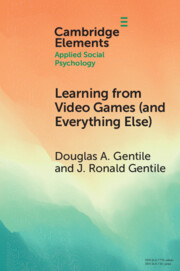Element contents
Learning from Video Games (and Everything Else)
Published online by Cambridge University Press: 01 December 2021
Summary
Keywords
- Type
- Element
- Information
- Online ISBN: 9781108966511Publisher: Cambridge University PressPrint publication: 23 December 2021
References
- 9
- Cited by



